As electric cars become more popular, drivers are facing increasingly long waits to plug in at charging stations.
Sourced through Scoop.it from: www.cbc.ca
As electric cars become more popular, drivers are facing increasingly long waits to plug in at charging stations.
Sourced through Scoop.it from: www.cbc.ca
Last night (or very early this morning if you live in the UK), Elon Musk CEO of Tesla Motors finally revealed the much anticipated 3rd part of his electric vehicle master plan, the Tesla Model 3.
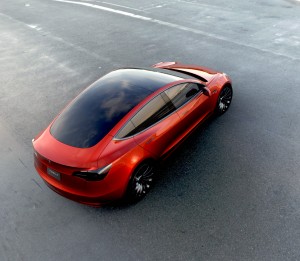
As an established player in the EV market, Tesla were looking for a vehicle with ‘mass market appeal’. In order to do this successfully they needed sell a vehicle with was considered ‘affordable’ to the masses, this doesn’t necessarily mean everyone should be able to purchase one, but affordable in the it’s target market, which in the Model 3’s case would be Audi A3 saloon or BMW 3 series.
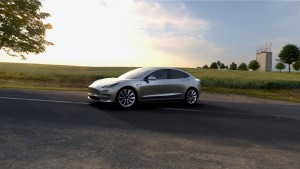
Elon Musk has consistently quoted that the Model 3 will be priced at $35,000 which is around £25,000 and he is not budging on this price in the USA anyway. In the UK, I would suggest £30,000 is going to be the starting price minus any remaining UK Government plugin grant that might exist by the time it launches in the UK late 2017 / early 2018.
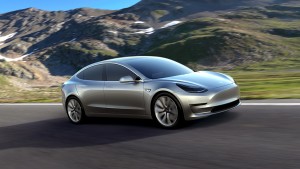
There is undoubtably going to be several models in the Model 3 range such as the P and D derivatives of the Model S and Model X, the standard entry level model is looking to have a projected range of 210 miles per charge, and accelerate to 60mph in under 6 seconds. It will be available in rear wheel and four wheel drive. Owing to it’s shorter wheel base, I would expect the battery size to be smaller than the current 90 kWh of the current top end P90D of the Model S and Model X, perhaps more likely to be 65 – 70 kWh, but this is simply guessing. However with this in mind, I would expect a Model 3 65, Model 3 P65 and Model S P65D but upon release the battery technology is going to be 2 years ahead of what we have now, so we might be in for a surprise however based on the projected ranges, I would go for a 65 kWh or smaller battery, with much less powerful powertrains than the existing models.
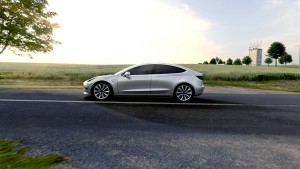
The Model 3 is all about mass market and to achieve this the car needs to be built in a mass market car plant which Tesla already owns in Freemont, California which was used in the past to manufacture GM / Toyota cars but now is refitted to build the Model S, Model X and now the Model 3. Again I would summise that the assembly plant in Tilburg, Netherlands will look after the European assembly of the Model 3 using parts shipped from the USA. Tesla has made an awful lot of noise about the Gigafactory in Sparks, Nevada which when fully up to speed will be able to manufacture more lithium ion batteries annually than were manufactured worldwide in 2013. This manufacture by economies of scale is projected to drive down the cost of the batteries needed to power Tesla’s vehicles and consequently bring down the price of the vehicles coming off the production line as well as the Tesla Powerwall home batteries.
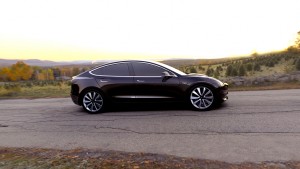 The Model 3 can according to Elon Musk, seat 5 adults comfortably, even on a smaller vehicle footprint. Tesla does this by moving the driving position forward into the space that would contain an engine if this was a traditional petrol or diesel car. It retains the centre console screen that graces the Model S and Model X, but is now a 15 inch landscape arrangement rather than the giant 17 inch portrait version. Inside the car, it retains the quality of the other Tesla models, but is significantly more sparse, perhaps similar to the BMW i3 which sacrifices refinement for space. As before, the car includes trunk and frunk (frunk trunk), for British readers, the bonnet area can be used for luggage as can the boot space.
The Model 3 can according to Elon Musk, seat 5 adults comfortably, even on a smaller vehicle footprint. Tesla does this by moving the driving position forward into the space that would contain an engine if this was a traditional petrol or diesel car. It retains the centre console screen that graces the Model S and Model X, but is now a 15 inch landscape arrangement rather than the giant 17 inch portrait version. Inside the car, it retains the quality of the other Tesla models, but is significantly more sparse, perhaps similar to the BMW i3 which sacrifices refinement for space. As before, the car includes trunk and frunk (frunk trunk), for British readers, the bonnet area can be used for luggage as can the boot space.
Outside of the vehicle, the design has been refined again completely removing the ‘grill’ of the Model S and taking the smoother front lines of the Model X to produce a completely seamless nose cone. The general design of the car echoes the Model S, but downsizing it in a similar fashion that the BMW 3 series downsizes to the 2 series. The front and rear lighting remains the same as the Model S and X, and the wheels appear to be available in a number of choices as the other current models.
The Model 3 will support Tesla’s Super Charger network from the outset meaning that fast charging on long journeys will be easily achievable.
The Model 3 is still a year away from final production, but that hasn’t stopped the flood of orders which mean’t that in less than 24 hours more that 135,000 232,000 pre-orders (and associated $1000 deposits) have been made with some people queuing around the block from their local Tesla Stores to get their order in first.
Check out the images from last night and launch video, all courtesy of Tesla Motors Inc.
Podcast: Play in new window | Download
Subscribe: Apple Podcasts | Email | TuneIn | RSS | More

This week Matt again joined the Grumpy Old Gits on Mark Murphy’s Morning Show on BBC Radio Suffolk, where together with Ian Healey and James Easter they had a collective grumble about the following:-
You can listen in to the stream to hear both what this weeks ‘GOG’s’ had to say and what they agreed or disagreed on.
Podcast: Play in new window | Download
Subscribe: Apple Podcasts | Email | TuneIn | RSS | More

This week Matt was a G.O.G. (Grumpy Old Git) on Mark Murphy’s Morning Show on BBC Radio Suffolk.
The subject matter still had technology subject matter as well as poor sound quality on broadcast TV, the perils of being computer savvy, the date of Easter, do children still go out to play and does riding an electric bike count as exercise?
Featuring Matt Porter, Mark Murphy, Rev. Andrew Dotchin and Neil Bowles.
You can listen to the stream, by clicking the play button above.
Podcast: Play in new window | Download
Subscribe: Apple Podcasts | Email | TuneIn | RSS | More
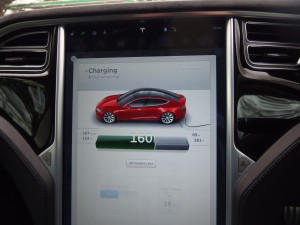
I have been driving the latest Tesla Model S P85D over the past few days, specifically to experience software update 7.1 and the improvements to Autopilot functionality.
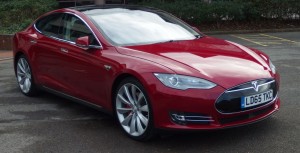
We discussed the technology behind Tesla Autopilot and also the future of autonomous and driverless cars.
You can listen to a recording of the stream and find out what we thought.
Following on from the Tesla Model S P85D Auto Park manoeuvre from Yesterday, I was as a rapid charger today and took the opportunity to make a short video explaining the functions of the centre console. Enjoy…
I thought I would post a short video showing the Tesla Model S P85D performing an Auto Park manoeuvre. This will hopefully form a series of posts and videos detailing the new updates to the car which include ‘Autopilot’ which is basically an advanced cruise control system. In the meantime, enjoy…
Podcast: Play in new window | Download
Subscribe: Apple Podcasts | Email | TuneIn | RSS | More
Podcast (podcast2): Play in new window | Download
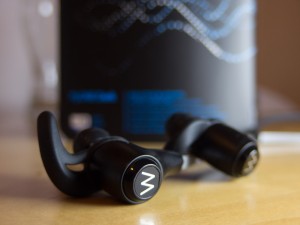 This week I have been testing a set of FlyONE Dark bluetooth headphones from DEEWEAR.
This week I have been testing a set of FlyONE Dark bluetooth headphones from DEEWEAR.
The headphones have an real ergonomic design coupled with extremely high audio quality, they are designed in such as way as you stay fixed in your ear by using built in flaps which fit into your ear and remain there even during exercise. Deewear employed Luigi Lorenzi, Parkourer with Team Jestion to test and develop the headphones to ensure they stay in place even during somersaults!
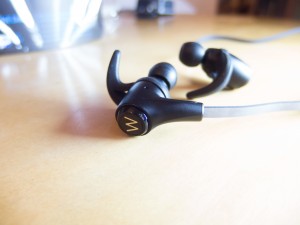 The earphones are contained in a display case charged ready to go, just couple them to your bluetooth device and you are ready to go, the box also contains a USB charger cable , buds and flaps.
The earphones are contained in a display case charged ready to go, just couple them to your bluetooth device and you are ready to go, the box also contains a USB charger cable , buds and flaps.
The earphones utilise Bluetooth 4.1 and 6th generation CVC noise reduction which means that constant usage stretches to 5 hours music or talk time (using the integrated microphone) or 180 hours standby time.
The earphones are connected together with a flat cable which is reflective on one side which can be seen when headlights shine on it, a usual safety measure if you are exercising in the dark.
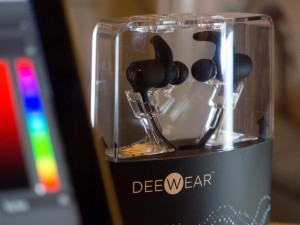
When you switch on the ear phones a voice is heard saying ‘Power On’ and ‘Connection Successful’, holding the centre power button will switch off the earphones again with a voice telling you ‘Power Off’.
The three button control allows you to adjust the volume up and down and pause music, you can skip backwards and forwards between tracks by holding the volume up and down for 2 seconds.
When you are ready to charge the earphones, you remove the cap on the back of the right earphone and plug in the micro USB cable. Charging doesn’t take too long, however you can only check the battery level by pairing with an Apple device, be that iPhone, iPad or iMac.
The sound quality of FlyONE Dark is supreme, although you need to ensure they are fitted correctly before using them to experience the excellent bass reproduction. While I was testing them, I viewed a film trailer on my phone, I found myself rewinding the trailer to experience the cinematic bass, it really was very good indeed.

If you are looking for a set of Bluetooth earphones, FlyONE Dark comes highly recommended.
To listen to the Mark and I chatting about the FlyONE Dark, click on the link at the top of the page or click below
A massive thank you to DEEWEAR for providing the earphones for test and review.
Podcast: Play in new window | Download
Subscribe: Apple Podcasts | Email | TuneIn | RSS | More
The price of oil is never far from the news these days, especially as it has a direct effect on the price of petrol, diesel and domestic fuel.
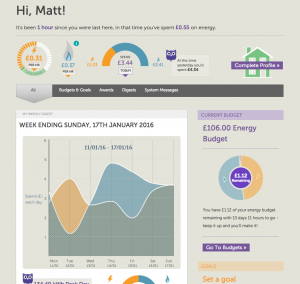
There has always been a direct correlation between the price of oil and electric and gas bills and the feeling that we as consumers are somehow trapped with a provider because it seems so difficult to move to an alternative.
Well, it looks like Loop have the answer to this problem by supplying a very nifty bit of that monitors your gas and electric usage and after a period of monitoring will be able to find a cheaper provider based on your usage.
It’s very simple to set up and I will cover all of this further in a full review soon. In the meantime, listen in to the stream to find out more about Loop.
It’s been 10 years since the last Star Wars movie was released and it looked like we wouldn’t been seeing anymore of the George Lucas universe. That was until 2012 when Lucasfilm was snapped up by Disney for $4 billion!
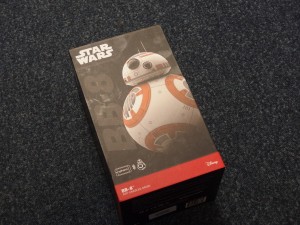
With this announcement came the news that the Star Wars movie franchise was to start again with the release of Episode VII The Force Awakens, followed by Episode VIII and IV plus other Star Wars movies not part of the main series. It’s certainly all go! As with the previous movies the mega marketing machine around Star Wars kicked swiftly into gear and earlier in the year Star Wars Day heralded the official reveal of a slew of toys, games, apps, games and much more.

The most enduring characters of the Star Wars series have most certainly been the droids R2D2 and C3PO, both featuring in all the films in the current series and set to continue to appear in the future too. Along with these fan favourites a new droid is set to take a starring role in The Force Awakens, his (we think it is a he) name is BB8.
BB8 shares certain similarities with R2D2 in the style the dome that carries the eye, however rather than the dustbin style body with legs, BB8’s body is made up of a large ball with the head magically floating onto as the ball rotates to move the droid around.
Disney have licenced the job of producing a ‘toy’ version of BB8 to the tech wizards at Sphero, who have in the past produced a number of robots based on balls that can be controlled by phone apps. BB8 retains this style of control, requiring the user to control the droid using a iPhone or Android device connected via a special app and Bluetooth. BB8 is charged by sitting the ball in a little cradle and whilst charging the dome head will move around is if taking in the surroundings.
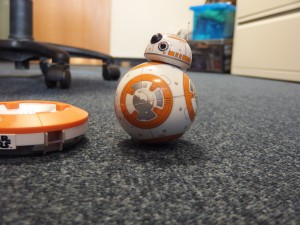
Once charged, you place BB8 on the floor and run up the special app, the droid jumps into life with all the sound playing through the smart phone. You can choose to pilot the droid using controls on the app, control it via ‘set piece’ moves, set it on patrol around your space where it with detect obstacles and attempt to avoid them whilst chirping away in the same style as R2D2. You can also control BB8 via voice by training the app to recognise different commands.
Finally you there is a entertaining ‘Hologram’ mode. This allows you to record a short video message on your phone and then have BB8 project it like a hologram. In reality this is done by pointing your phone camera at BB8 and having the hologram overlaid onto the image on the screen. It is quite cool though,
The Sphero BB8 is not really a toy aimed at young children and at around £120, it’s fairly pricey to and might have limited interest after the hysteria of the movie dies down. Expect more from BB8 in the upcoming movies and a revised ‘battle damaged BB8’ in 2016